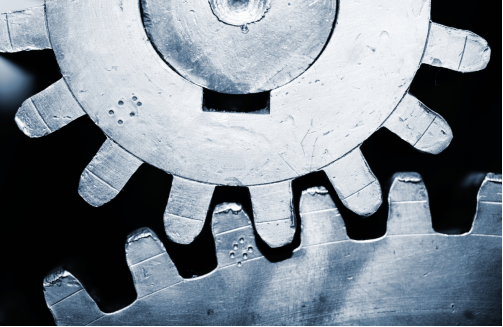Different Types of Geared Motors and Their Applications
A gear motor is an electric motor coupled to a gearbox. In most cases, the purpose of adding a gearbox is to limit the speed of the motor shaft and increase the output torque of the motor. Gears convert shaft speed and torque at a specific ratio with minimal loss of efficiency, which allows the ideal output speed and torque to be produced by adding a properly sized and configured gearbox. Additionally, the user can use the gearbox to redirect the output shaft to a different direction.
In this blog, we will better understand the different types of gear reduction motors and their advantages, as well as common applications of geared motors.
What types of geared motors are there?
Generally speaking, the most common forms of geared motors are right angle gear motors using worm, bevel or hypoid gears and inline gear motors using spur gear or planetary gear systems. Worm, spur and planetary gear technologies are the most commonly used technologies in gear motor design. With selectable AC or DC motor types and reduction ratios, gear motors can be adapted to a wide range of applications.
1. Spur gear
Spur gears are the most commonly used form of gears, cut by spur teeth or placed perpendicular to the gear axis on a spherical (i.e. cylindrical) gear body. Its advantages are low cost, high transmission ratio and torque output, and small size. These gears use a parallel shaft arrangement to transmit motion and force when connected in pairs. Depending on the application, they can be coupled with different spur gears, internal gears (eg planetary gears) or racks (eg rack and pinion pairs).
Spur gears are used in a wide range of mechanical applications, including clocks, pumps, irrigation systems, power station machinery, material handling equipment, and laundry washing and drying machinery.
2. Bevel gear
Bevel gear sets have intersecting shafts that are often, but not always, perpendicular. They are paired by using teeth with sloping edges. Straight or helical teeth are possible. Straight bevel gear teeth are used for low speed applications, while helical teeth are used for high speed and high performance applications. The advantage of bevel gears is that they are highly durable.
There are many types of bevel gears to choose from, the main difference between them is their tooth profile design. Spur, helical and bevel gears are popular bevel gear varieties.
3. Worm gear
A worm gear set consists of a worm gear (usually a cylindrical gear) and a worm (helical gear). These gears are used to transmit motion and power on non-parallel and non-intersecting axes, and they have huge gear ratios that can significantly reduce speed while remaining quiet and smooth. They have the advantages of high accuracy, maintenance-free and low noise.
One contrast between a pair of worm gears is that the worm can make the worm wheel rotate, however, the worm gear may not be able to turn the worm according to the direction of the worm. This feature is used for devices that require a self-locking mechanism.
The most common applications of geared motors
Many industrial gear reduction motors are typically fixed speed AC powered devices, while variable speed fixed gear motors provide more control than motors. DC gear motors are most commonly used in the automotive industry, such as truck powered cranes, power seat or power window motors. On the other hand, gear motors are used in various industrial applications including jacks, cranes, elevators, automated machines.



评论
发表评论